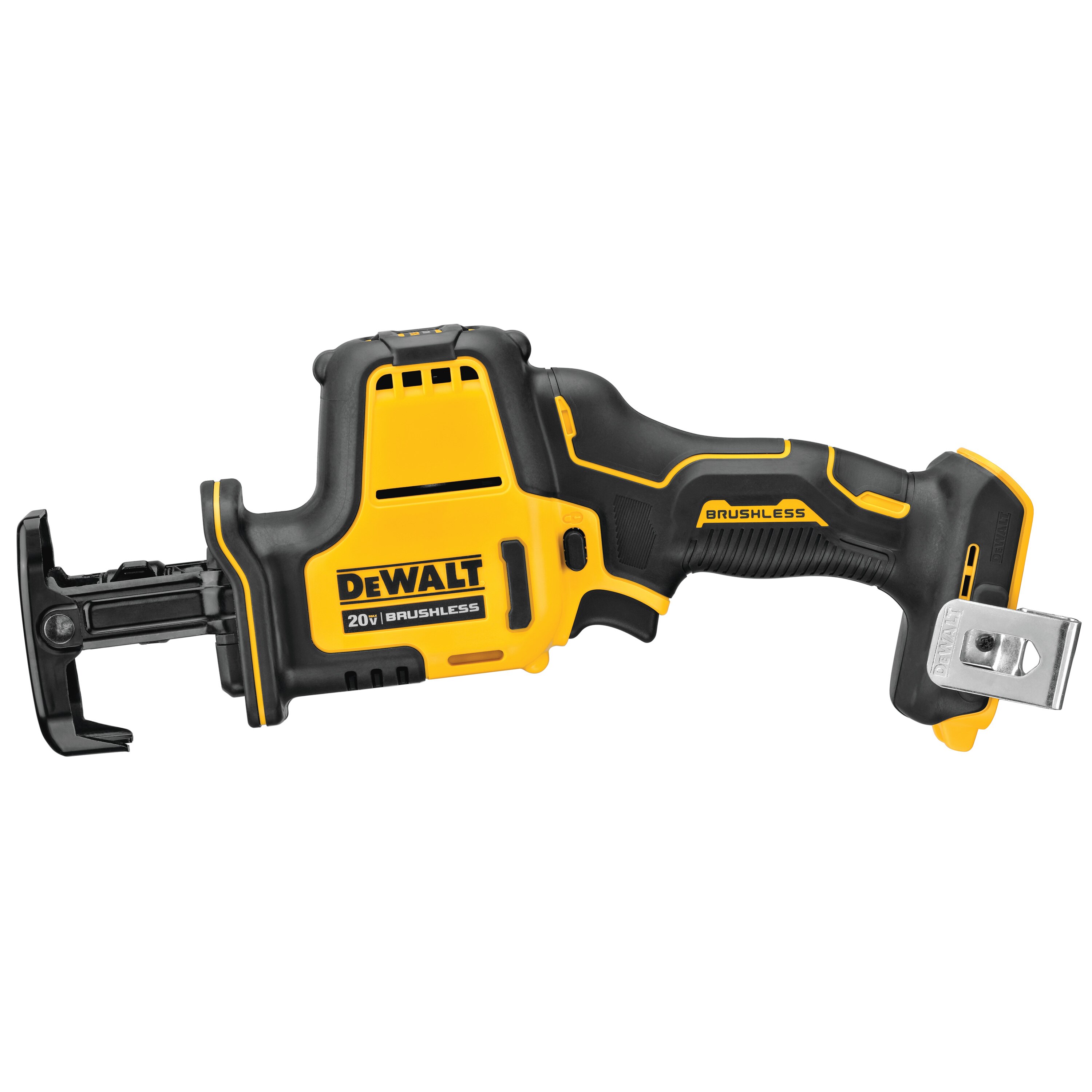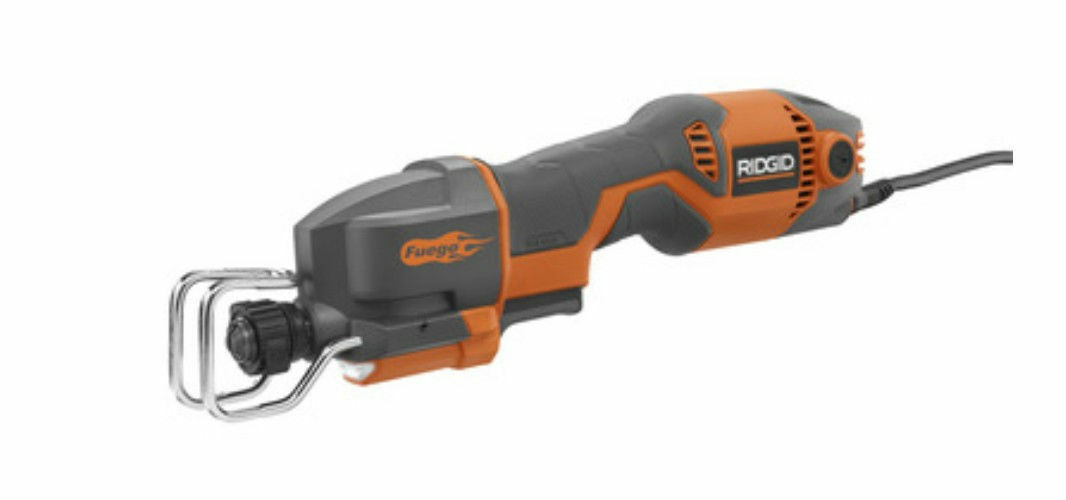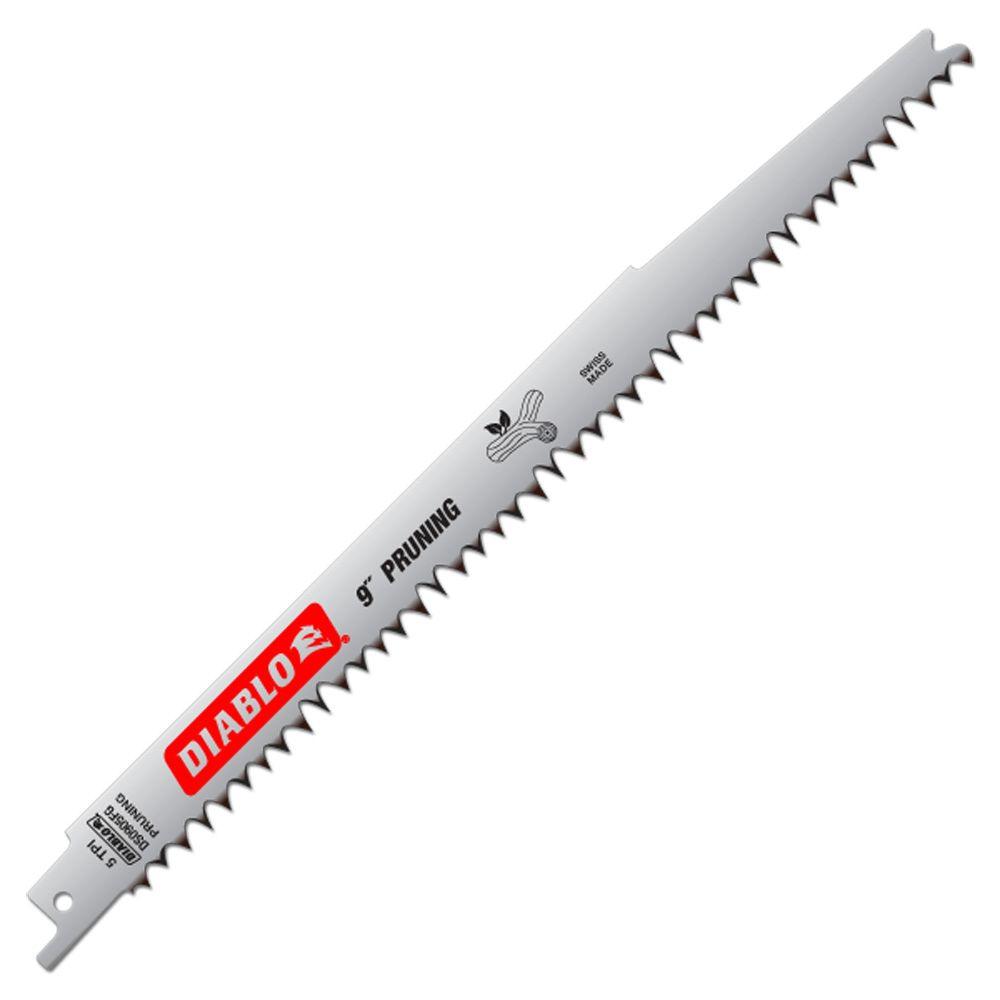Pruning with a Reciprocating Saw
Updated 23rd of January 2021
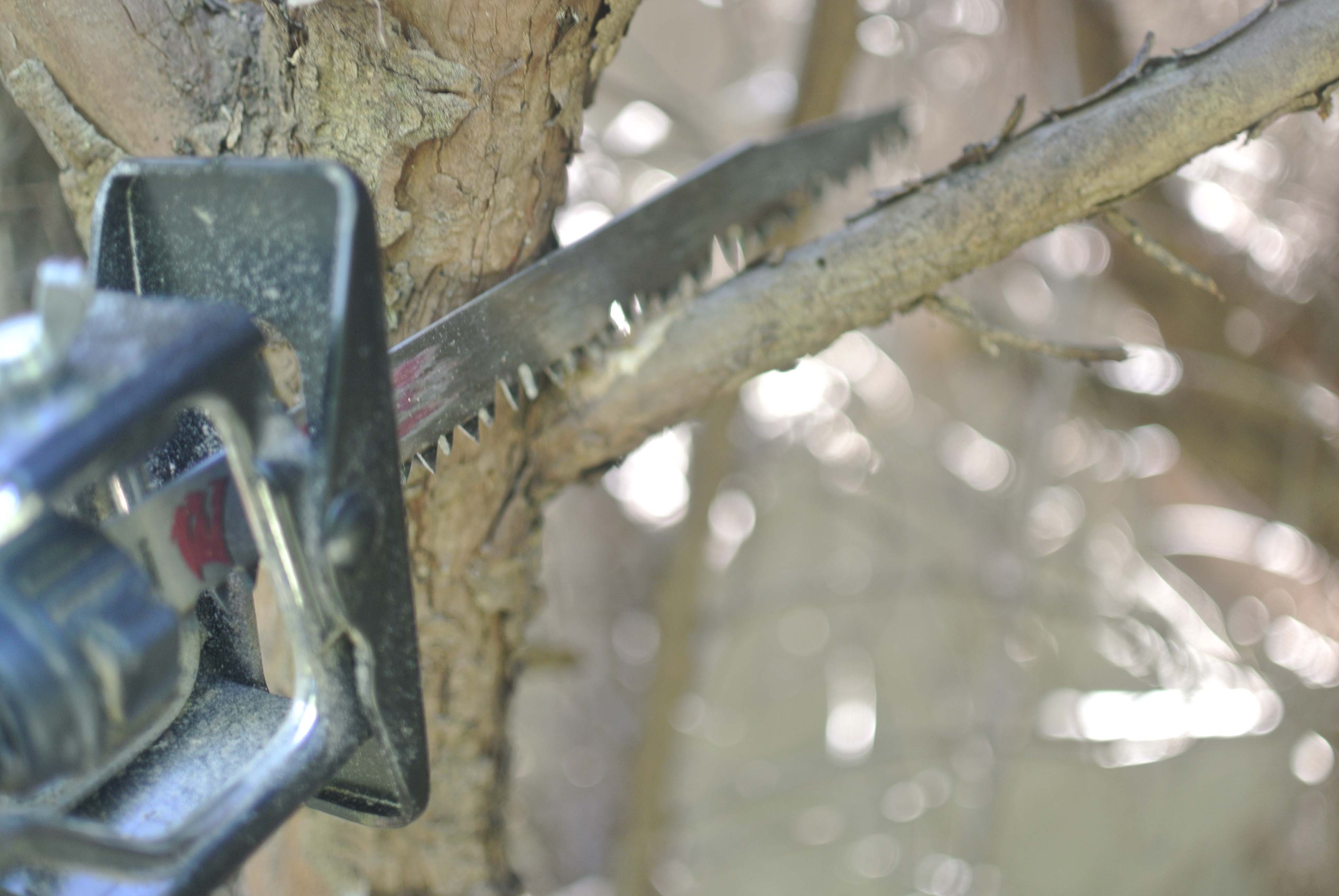
It’s hard to beat a reciprocating saw for most pruning jobs. Sure, if it’s a couple of branches a hand pruning saw will do. Or maybe some loppers will suffice. But with a large job, a reciprocating saw can do in minutes what would otherwise take hours. As always, you NEED THE RIGHT TOOL FOR THE JOB at hand. In this article, I’ll cover saw selection, blades, and technique required for successful (and enjoyable) pruning. I’ll also discuss what you can and can’t prune with a reciprocating saw, and why a one-handed reciprocating saw is the best reciprocating saw for pruning.
Quick product guide
Cutting branches with a reciprocating saw
The most asked question about pruning with a reciprocating saw would have to be “how large a branch can a reciprocating saw cut?” We’ll get to that. But I’d say an equally, if not more important question is this: how small a branch can be cut with a reciprocating saw! I answer these questions, in the process highlighting that a one-handed reciprocating saw is the tool of choice for pruning.
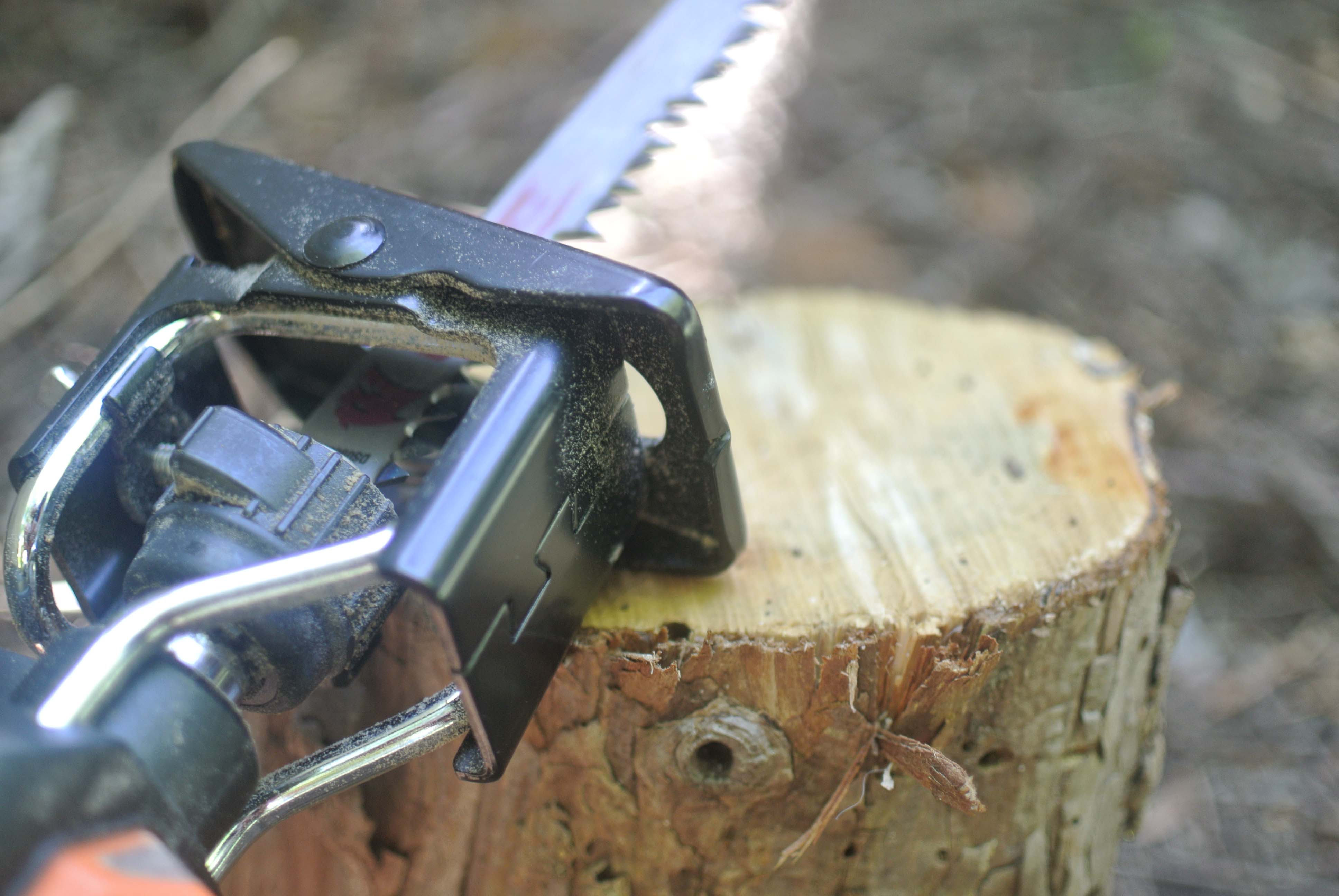
Okay, onto those large branches... Anything over around two inches, and I would be reaching for a chainsaw. While a reciprocating saw (with the right blade) can cut a larger branch – it will be slow. In the picture above is about a 5 inch stump. This cypress was cut with a reciprocating saw – and took a couple of minutes to cut. This would take seconds with a chainsaw… Under 2 inches you should be looking at 10 seconds max per cut with a reciprocating saw.
Now let’s consider small diameter branches. You can cut as small as you like, but ONLY if you can keep the branch firmly in position so it doesn’t catch in the blade teeth. If it catches, it causes the branch not to cut, but simply move back and forth with the saw blade – which then vibrates the reciprocating saw. The ultimate reciprocating saw for pruning is a one-handed variant. The main reason is simple – it leaves the other hand to secure the branch you are cutting. Say you have a 2 inch fallen branch. Without holding on the branch (or securing it in some other way), you will not be able to cut it with a reciprocating saw. The other advantages of a one-handed reciprocating saw are that they are lighter, well balanced, and have the trigger is in the middle of the tool, rather than at the rear. Its versatility and ease of use for pruning is far superior.
Reciprocating saw pruning blade selection
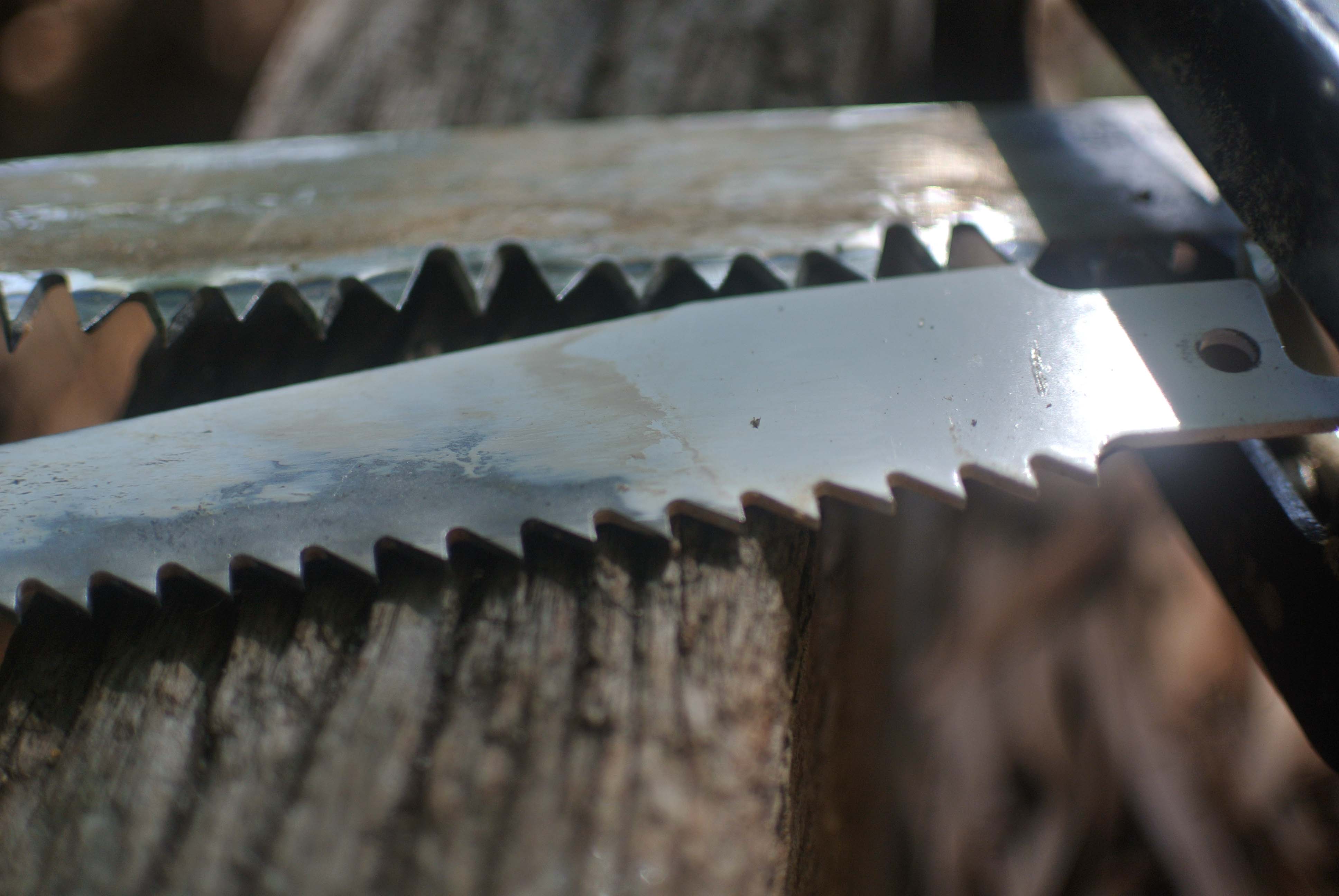
To prune, a specialist reciprocating saw blade is required. Blade manufacturers generally sell blades labelled specifically for pruning - a “Pruning Blade”. These blades have around 5 Teeth Per Inch (TPI). The teeth are fleam ground, meaning they cut in both directions, and are designed with large gullets (space between the teeth) that efficiently remove the cutting waste and avoid blade clogging. The size of a pruning blade should be between 9 and 12 inches. While it may seem like a long blade for cutting a small branch, the length is useful for hard to reach cuts. Most blades will be made from high carbon steel. In the picture above, the top blade is a pruning blade, while the bottom blade is a “wood” blade.
Reciprocating saw vibrations when pruning
Very small growth close to the trunk of a tree can easily be trimmed with any reciprocating saw. But say you were trying to trim a half inch branch a couple of feet from the trunk. You would likely find the blade teeth would catch on the growth, and shake the half inch branch back and forth with the blade also vibrating the saw in your hand.
This problem is also present if you want to trim growth off a branch already removed from a tree.
Thankfully there is a solution - hold the branch firm with one hand while cutting with the other. With a classical two handed reciprocating saw this is difficult due to its weight, size, and trigger orientation. As a result, a one-handed reciprocating saw is much more convenient for pruning.
Cutting greenwood with a reciprocating saw
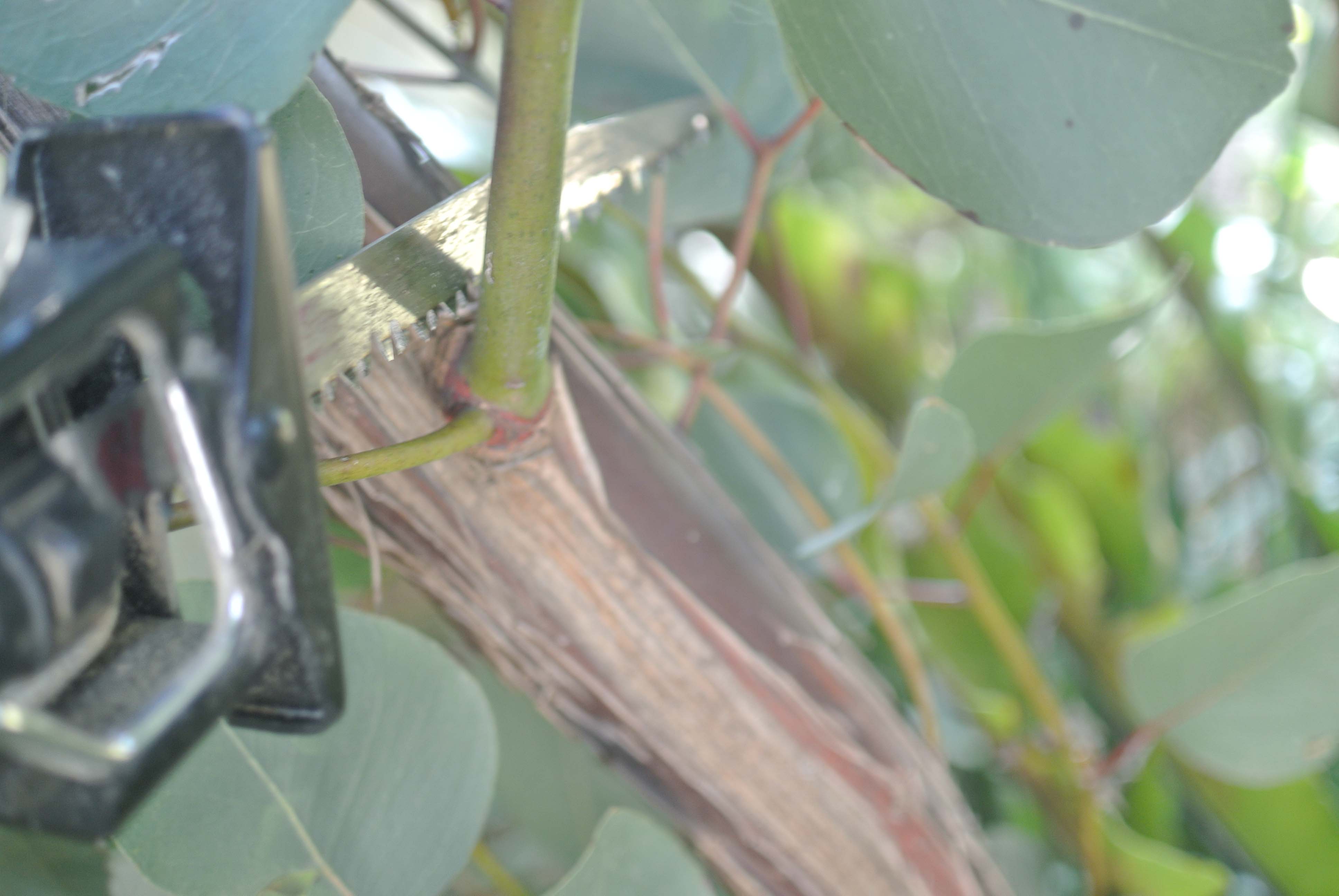
A blade labelled for “wood” is not designed to cut greenwood, and is therefore inappropriate for most pruning. A “pruning blade” is designed for greenwood.
Corded or battery powered reciprocating saw
Quality branded reciprocating saws that are battery powered easily have sufficient power for pruning. In terms of convenience, battery powered wins. While price of the saw skin itself if not prohibitive, batteries (and a charger) can be pricey if you do not already own these. If you don’t already have a battery and charger, I generally recommend a corded reciprocating saw if you are price conscious, and can access all areas of your property with an extension cord. Otherwise a cordless and brushless model is preferable. A 5Ah battery will last for hours of use.
Pruning technique with a one handed reciprocating saw
Pruning a branch with a one handed reciprocating saw is not difficult. I recommend leather gloves and safety goggles, in addition to ensuring you have stable footing (particularly when on a ladder). A firm grip of the reciprocating saw is required. If the branch is not secure, use your free hand to hold the branch firm. Line up the desired cut with the blade hovering say an inch above the branch. Pull the trigger and ensure the blade is running at full speed. Once at full speed, application of pressure with a slow backward and forwards motion will reduce chance of the blade jamming, whilst also clearing waste.
Trimming bushes or small trees with a reciprocating saw
As mentioned above, a limitation of a reciprocating saw for pruning is that the branch to be cut must be secure, or else the branch will simply catch in the blade. If you want to trim nothing but smaller growth (say quarter inch or below), a blade with a non-pruning blade with a higher TPI may help, but pruning shears are most likely the best approach.
Does a reciprocating saw replace a chainsaw?
A reciprocating saw (with a pruning blade) will be preferred for cutting branches up to 1-2 inches in diameter. Using a reciprocating saw also allows you to clear the branch of growth quickly. Above this size, if you want to make multiple cuts, a chainsaw is much more convenient, and I would make the effort to oil, adjust chain tension, and use a chainsaw.
